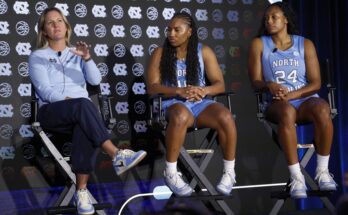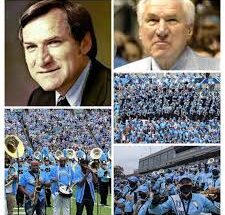The Golden State Warriors find themselves at a crucial crossroads regarding the future of their franchise icon, Stephen Curry. As one of the greatest shooters in NBA history and the cornerstone of a dynasty that redefined basketball in the 2010s, Curry’s future remains a central topic of interest not just for the Warriors but for the entire league. The Warriors’ offseason, which traditionally has been marked by aggressive moves and dynamic roster construction, has instead been sluggish, intensifying questions about how the team plans to proceed with Curry at the helm.
Stephen Curry, now well into his 30s, has transcended the game with his unparalleled shooting ability, transformative offensive skill set, and charismatic leadership. His legacy is cemented with multiple NBA championships, two MVP awards, and countless moments of brilliance that reshaped the way basketball is played. Yet, the natural aging process and the inevitable wear and tear on his body raise questions about how many peak years he has left. The Warriors front office, led by Bob Myers, faces a delicate balancing act—honoring Curry’s contributions and status while strategically positioning the team to remain competitive in a rapidly evolving Western Conference landscape.
The offseason has been slow for Golden State, contrasting sharply with previous years when the Warriors would aggressively pursue free agents, trades, or draft picks to build around their core. This sluggishness could be attributed to multiple factors. First, there is uncertainty surrounding Curry’s contract situation and long-term commitment. Curry’s current deal still has some time left, but there has been increasing speculation about how the team will manage its salary cap space in the coming seasons. The Warriors want to ensure that they can keep Curry happy and motivated while also assembling a supporting cast that can contend for championships.
Second, the Warriors’ roster construction needs careful attention. After their championship runs, the team has faced challenges such as injuries, aging role players, and the rising competitiveness of other Western Conference teams like the Phoenix Suns, Denver Nuggets, and Los Angeles Lakers. The front office is likely weighing the best approach to integrate young talent with veteran presence, all while keeping Curry’s style of play in mind. Curry thrives in a system that allows him space and the freedom to shoot, so any roster additions must complement his unique offensive game without disrupting team chemistry.
Moreover, the Warriors have witnessed a generational shift in the NBA, with younger, athletic teams emphasizing pace, space, and versatility on defense. This means that Golden State’s traditional strengths—shooting, ball movement, and high basketball IQ—must be augmented by physicality and defensive toughness. The sluggish offseason may signal a more measured approach, focusing on retaining flexibility to respond to opportunities rather than making impulsive moves. The front office might be prioritizing future draft assets or waiting for the right market conditions before committing to new players or extensions.
Curry’s role within the team is also evolving. While he remains an elite scorer, the way he manages his minutes and effort on defense has become more strategic. This natural evolution is common for superstars entering their mid-30s, as they focus on longevity and effectiveness over sheer volume. The Warriors coaching staff, led by Steve Kerr, is adept at adapting schemes to maximize Curry’s impact while minimizing injury risk. The offseason’s quiet nature could reflect ongoing internal evaluations about how best to manage Curry’s workload and integrate new players into the system.
Off the court, Curry’s influence extends beyond basketball. He is a cultural icon, a marketing powerhouse, and a leader in the community. This adds an additional layer of complexity for the Warriors management as they consider not only his athletic contributions but also his value as a franchise ambassador. Maintaining a positive relationship with Curry is paramount, as his presence draws fans, sponsors, and media attention, all of which contribute to the team’s brand strength.
The Warriors are also navigating a tricky salary cap landscape. Curry commands a significant salary that limits the team’s financial flexibility. Adding high-impact players often means stretching the cap or taking on complicated contracts. The front office must find creative solutions to maintain a competitive roster without sacrificing future flexibility. This could explain the slower pace in free agency and trades. The team might be exploring options like mid-level exceptions, veteran minimum deals, or two-way contracts to fill out the roster without jeopardizing their core.
In addition, the Warriors are mindful of their draft position and the development timeline of their younger players. The team has a few promising prospects who may eventually play pivotal roles alongside Curry. The slow offseason might be a reflection of a wait-and-see approach, allowing young talent to develop organically in training camp and the early season before making further roster moves. This patience could pay dividends if these players mature into reliable contributors.
The league’s competitive landscape also influences Golden State’s offseason strategy. The Western Conference has become increasingly crowded with teams boasting star talent and depth. The Nuggets, Suns, Clippers, and even teams like the Dallas Mavericks and Memphis Grizzlies are pushing to dethrone the Warriors. To keep pace, Golden State must strike the right balance between veteran experience and youthful energy. Curry remains the lynchpin of this effort, but he cannot carry the entire team alone. The Warriors need complementary stars or at least high-level role players who can alleviate pressure on Curry during the playoffs.
The Warriors’ slow offseason has drawn criticism from some fans and analysts who question the organization’s urgency. Given Curry’s age and the fleeting nature of championship windows, there is a school of thought that the Warriors should be more aggressive in acquiring talent immediately. However, others argue that a measured, deliberate approach is wiser to avoid costly mistakes or overpaying for marginal upgrades. The truth likely lies somewhere in the middle, with Golden State aiming to maintain flexibility and avoid desperation moves.
It’s also worth considering Curry’s personal perspective. As a player who has experienced both the highs of multiple championships and the lows of injury setbacks, Curry may have input on the team’s direction. His desire to continue competing at a high level could influence decisions regarding roster construction, coaching strategies, and training regimens. The Warriors’ leadership must communicate transparently with Curry to ensure alignment of goals and expectations.
Looking ahead, the Warriors face several key milestones related to Curry’s future. Contract extensions, potential retirement discussions, and his role as a mentor to younger players are all factors that will shape the franchise. The organization must balance honoring Curry’s legacy with the practicalities of team building and competitive sustainability. This balancing act requires patience, strategic foresight, and a bit of calculated risk.
The sluggish offseason may ultimately reflect a deeper strategic recalibration by the Warriors. Rather than rushing to replicate past success, Golden State might be focusing on building a sustainable model for the future—one that can adapt to changing league dynamics while leveraging Curry’s unique talents. This approach could involve investing in player development, sports science, and innovative basketball analytics to extend Curry’s prime and optimize team performance.
In conclusion, the Golden State Warriors’ intrigue surrounding Stephen Curry’s future and the team’s sluggish offseason reveal the complexities of managing a championship-caliber franchise in transition. Curry remains the heart and soul of the Warriors, but the organization must carefully navigate salary cap constraints, roster needs, and competitive pressures to build around him effectively. While the offseason’s slow pace may frustrate some, it could be a sign of prudent management focused on long-term success rather than short-term fixes. The Warriors’ path forward will depend on their ability to blend Curry’s enduring greatness with fresh talent and strategic vision, ensuring the franchise remains a contender in the years to come.


